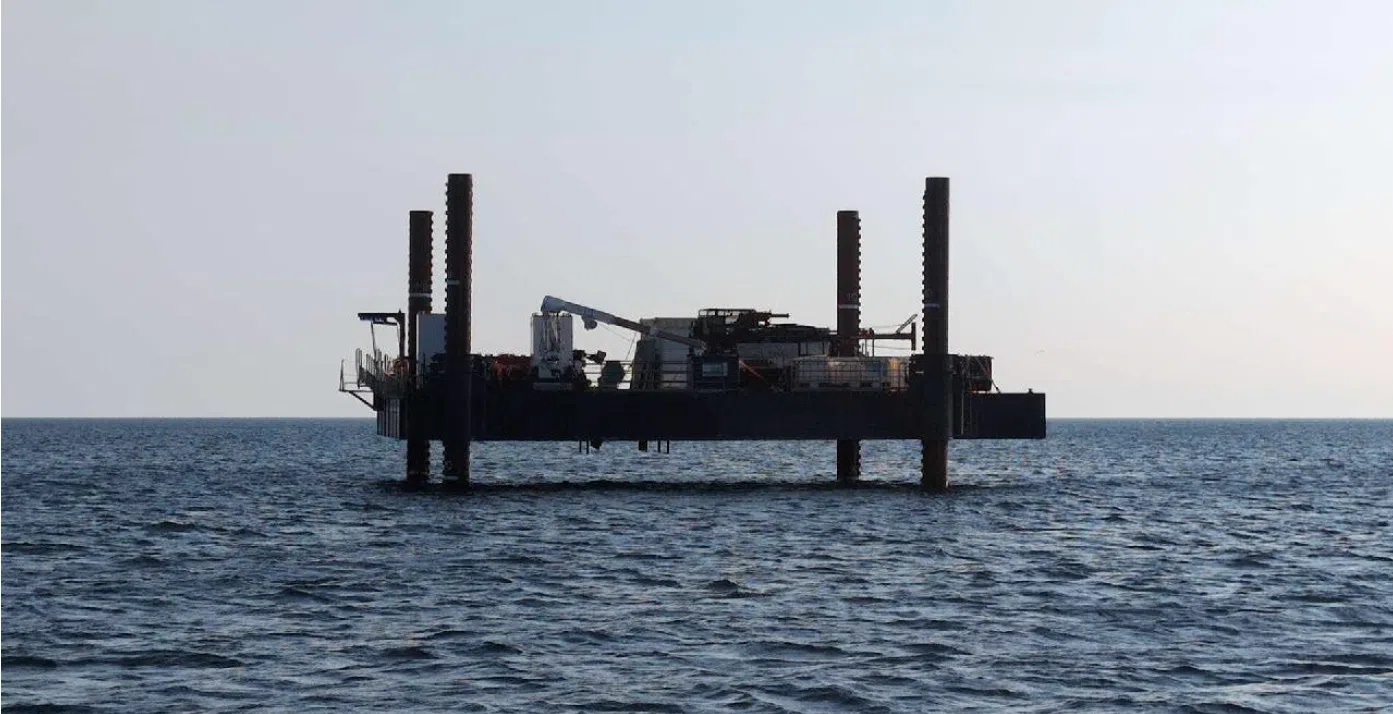TC Energy has begun is offshore drilling program in Georgian Bay as part of a proposed pumped storage project.
Ontario Pumped Storage Communications Lead Sara Beasley says a temporary barge was installed during the last week of July about 600 to 1,000 metres offshore, east of the 4th Canadian Division Training Centre.
“It’s part of continued pre-development work on the Ontario Pumped Storage Project,” says Beasley. “This includes borehole drilling below the lake bed and this will allow us to better understand the soil and rock composition. The boreholes are being drilled from a temporary barge platform.”
She says the drilling is one of many programs and studies TC Energy is undertaking for the proposed pumped storage project to ensure it meets environmental and technical standards.
“The work that we are doing this summer will help inform our design moving forward, it will also be included in our upcoming regulatory process. All of the information that we collect over the course of this study as well as subsequent studies will be included in the regulatory process, which will be available for public review,” says Beasley.
She says this type of borehole drilling is very common in the Great Lakes.
“Specifically for this project, as part of the design we are proposing, we will be required to install an inlet and outlet structure that will move water into and out of Georgian Bay. The geotechnical data that we will be collecting over the course of the summer will be used to ensure the feasibility and the safety of that inlet and outlet structure within Georgian Bay,” says Beasley.
The work requires both provincial and federal approval, from the Ontario Ministry of Natural Resources and the Department of Fisheries and Oceans Canada.
“We have also engaged with the Department of National Defence and Navigation Canada,” says Beasley.
Save Georgian Bay, a citizen group opposed to the pumped storage project, has concerns about the rig.
One of the Directors of Save Georgian Bay Tom Buck says, “Like any oil drilling rig, this thing uses fuels and has lubricants in its operation. It is fastened into the lake bed by four legs so it generates sediment in its drilling operation and it is becoming fastened to the lake bed. Were something to spill from it that is a hazardous contaminant, we would see that floating down to the residential area that uses Georgian Bay as its water supply.”
He adds they have also heard from the community.
“We are hearing from residents that are nearby where the drilling rig has appeared, some alarm that such a device is being used in Georgian Bay, and it is kind of a harbinger for what would be to come if their project was approved. It’s the first notice that construction equipment would be used in the water to help complete their objective,” says Buck. “We think that there is a huge giveaway going of Georgian Bay for commercial use here and it poses a great risk to the quality of water, the quality of the fish habitat and marine life habitat. We are objecting to it being there at all.”
In response to Save Georgian Bay’s concerns, Beasley says protecting Georgian Bay is a top priority for TC Energy.
“As we designed this offshore geotechnical program, multiple layers of design, procedures and oversight have been implemented to demonstrate protection of Georgian Bay and all the work is being planned in compliance with the Department of Fisheries and Oceans Canada. They have provided guidance in terms of recommended timing periods in order for us to avoid any impacts to Georgian Bay,” says Beasley.
TC Energy put out a notice about the drilling project in June and plan to conduct the work to the end of September on a daily 12-hour schedule.






